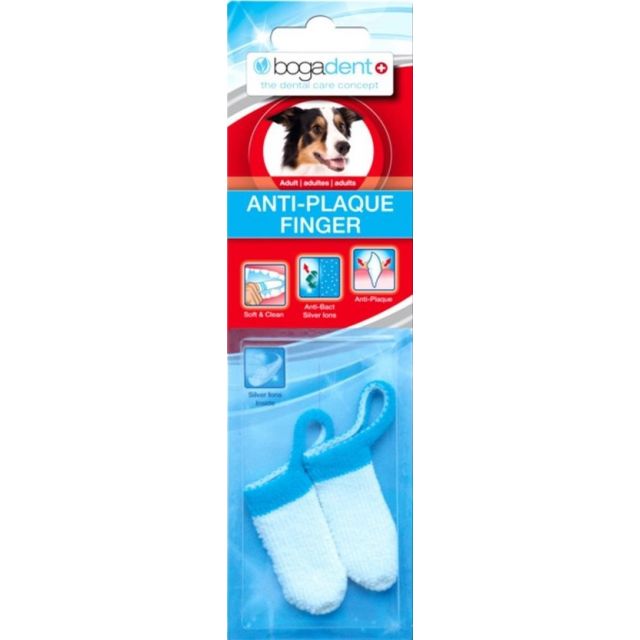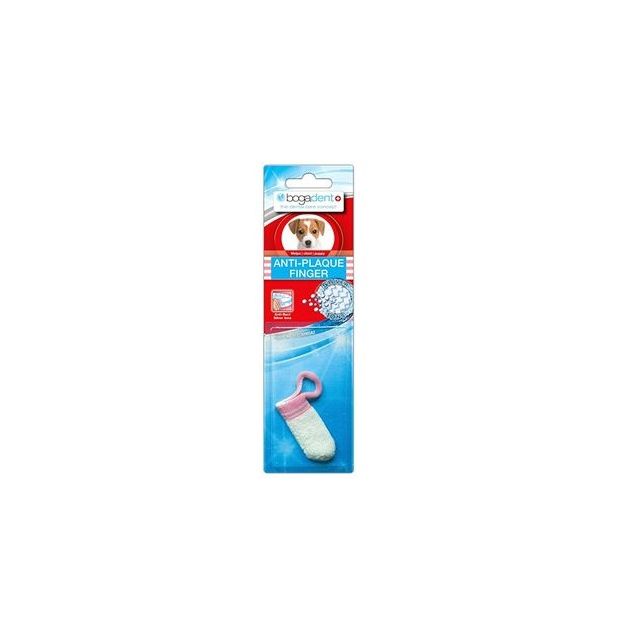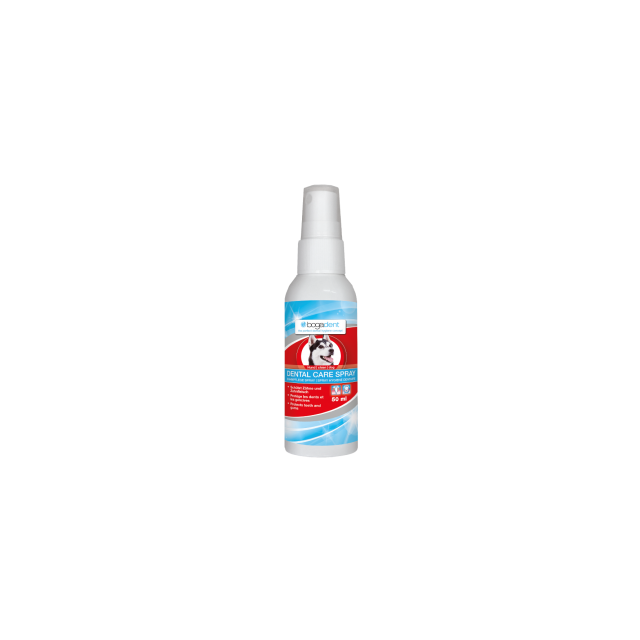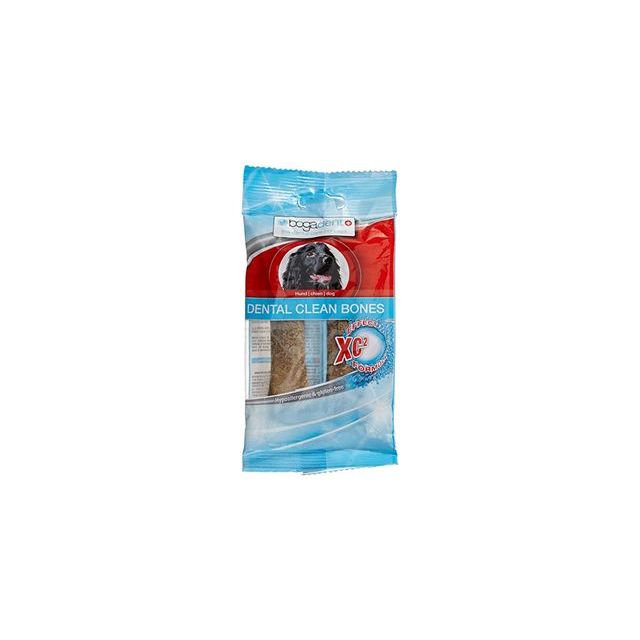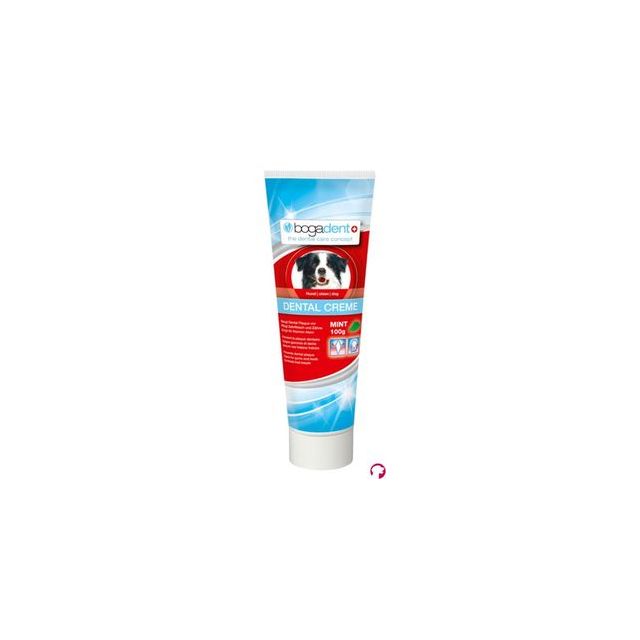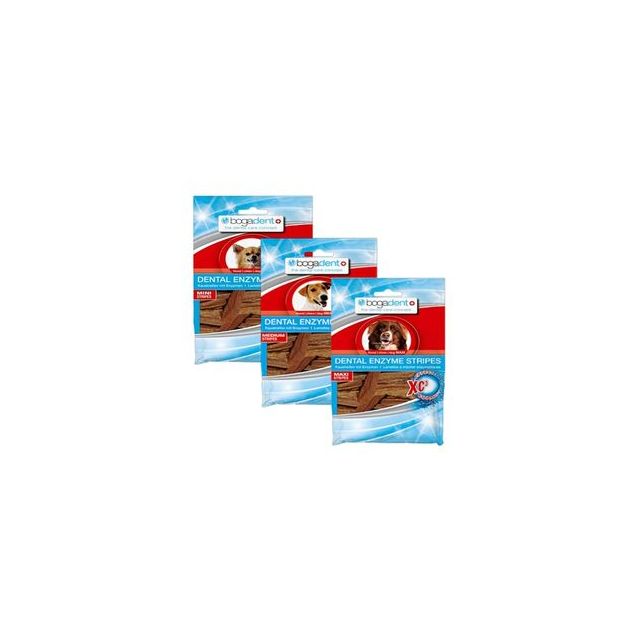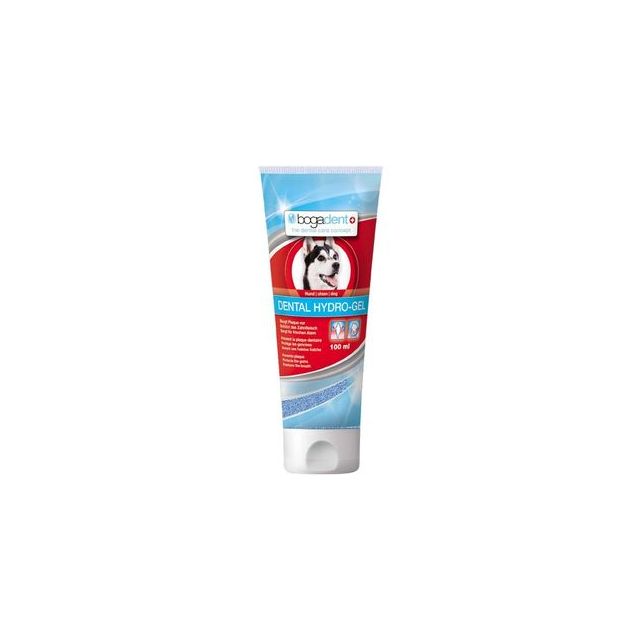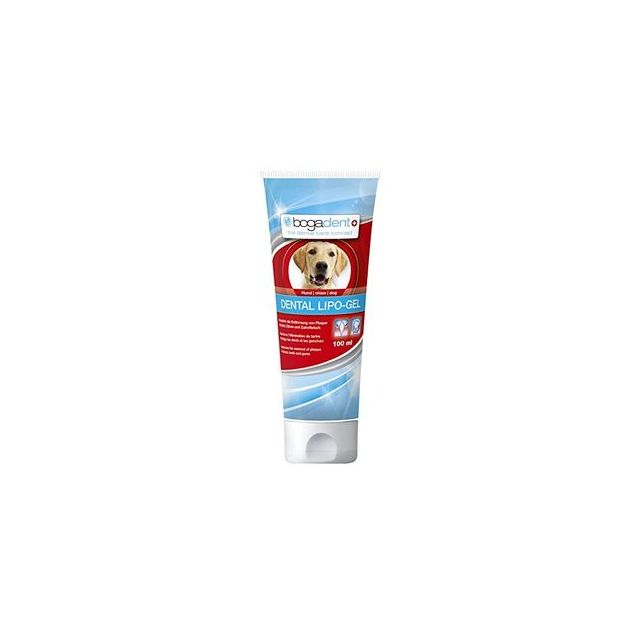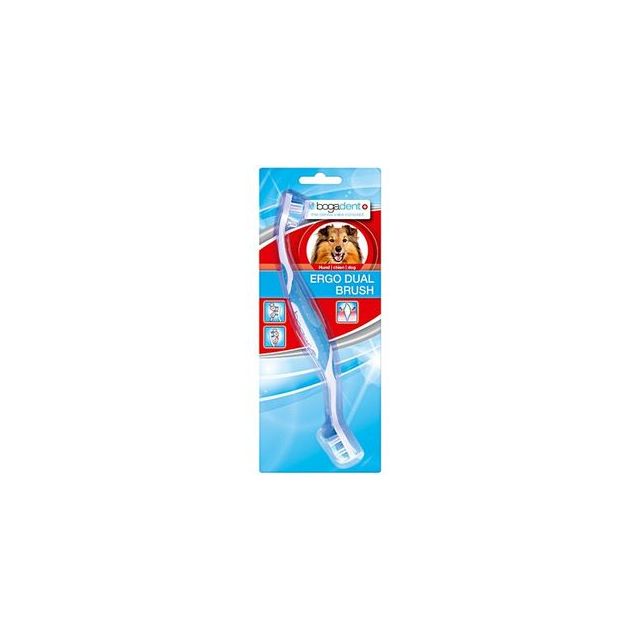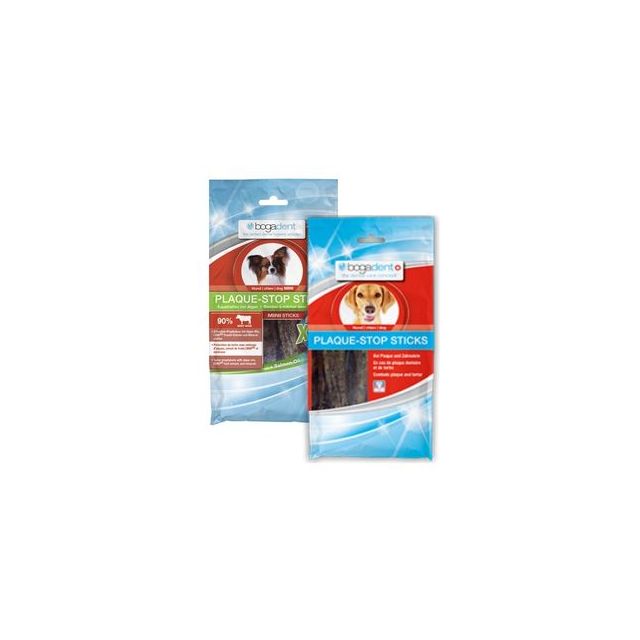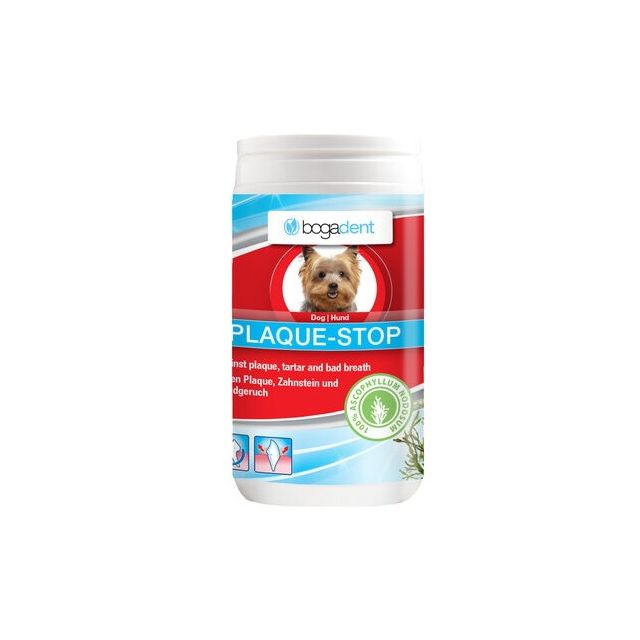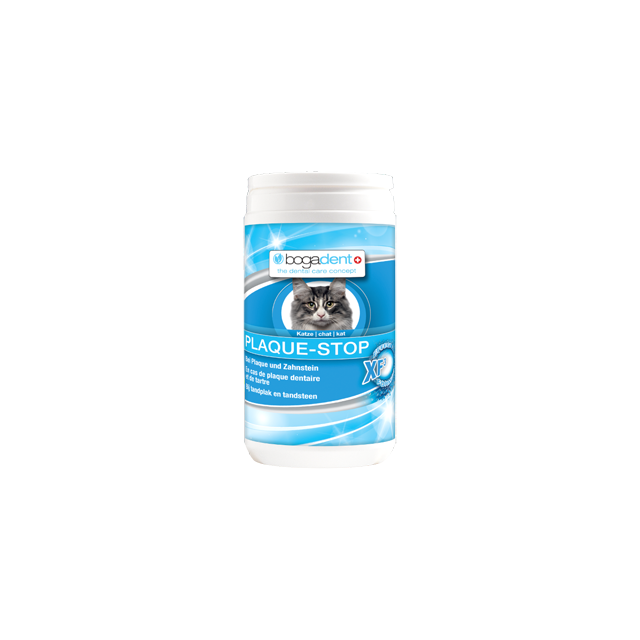The teeth of the dog
Dogs naturally have teeth and molars suitable for devouring prey. Modern-day dogs, of course, no longer need to catch and tear their food themselves. However, it is important to keep your dog's teeth healthy. Clean teeth and healthy gums contribute to your dog's overall health. Pharmacy4pets helps you maintain your dog's teeth in top condition.
Dental Problems in Dogs
Dental problems are common in dogs. Dogs don't get cavities, but they can suffer from plaque buildup. If plaque is not removed in time, for example, by chewing on special kibble or chewing strips or by brushing their teeth, tartar forms. Bacteria thrive under the tartar, leading to gum inflammation. The inflammation can also affect the underlying tissues, eventually causing teeth and molars to loosen. It goes without saying that your dog will be in a lot of pain long before this happens! Going to the vet on time for dental problems prevents a lot of suffering. Moreover, bacteria from the oral cavity can also lead to inflammations of the heart, kidneys, and liver via the bloodstream. It is therefore advisable to have your dog's teeth checked by your vet at least once a year. By brushing your dog's teeth, you keep your dog's teeth healthy.
Other common dental problems in dogs include: malocclusions, such as a too narrow lower jaw causing the lower incisors to poke into the palate, fractures (breaks) of teeth or molars, or 'double' (persistent) milk teeth, where one or more milk teeth remain after the transition to the adult dentition. This causes overcrowding and may cause the adult tooth to become misaligned. Always a reason for a visit to the vet!
Symptoms of Dental Problems in Dogs
It is often thought that the most important symptom of a dog with dental problems is eating poorly or not at all. However, this is very often not the case! The problems often develop gradually, and your dog learns to cope with the pain. Moreover, hunger is often simply too important a motive to not eat. Your dog may change its eating habits in other ways (e.g., chewing on one side, not chewing or chewing less well) to make eating as painless as possible.
The most obvious symptom, or rather, the smell! is often a foul odor from the mouth. A dog with a healthy mouth does not have bad breath; even when your dog is older. If your dog's breath smells bad, there is almost always something wrong.
Important symptoms of dental problems include:
- Foul odor from the mouth.
- Brown or yellow deposits on teeth and molars.
- Loose or missing teeth or molars.
- Discolored teeth or molars (brown or bluish).
- Red gums.
- Bleeding gums.
- Double teeth: milk teeth and permanent teeth present simultaneously.
- Excessive drooling.
- Eating less.
- Eating slower.
- Messy eating.
- Altered eating: e.g., chewing less well, chewing only on one side, holding food in the mouth 'tossing it aside', etc.
- Broken or split teeth or molars.
- Being less cheerful or fit (pain!).
It is important to regularly check your dog's teeth. This starts with smelling the breath. Then you can gently lift the lips and inspect the teeth, molars, and gums. By brushing your dog's teeth regularly, you help keep its teeth healthy. It is advisable to have your dog's teeth checked by your vet at least once a year.
Brushing Your Dog's Teeth
As mentioned, brushing your dog's teeth is very important, but you may wonder how to do it. If your dog is not used to brushing teeth, it can be difficult to clean its teeth properly.
The most important thing is to build up tooth brushing very calmly and to continue to reward your dog. Grabbing the snout is perceived as punishment by dogs; it is best to approach the snout from below and from the side, and not to completely encompass it. You can follow these five steps to clean your dog's teeth:
1. Toothpaste as a treat
Wash your hands and apply a little toothpaste - such as C.E.T. liver-flavored toothpaste – to your index finger. Let your dog lick the toothpaste off your finger to get used to the taste. Do not use human toothpaste. Most dogs do not like the minty taste. Furthermore, human toothpaste is meant to be spat out. Dogs swallow the toothpaste and can ingest too much fluoride if they do so with human toothpaste. In dogs, toothpaste is primarily intended as an abrasive to remove plaque and to make tooth brushing enjoyable (due to its taste), as they hardly ever get cavities.
2. Practice with the finger (brush)
Gently rub a finger with toothpaste over your dog's teeth. Your dog may need to get used to having its mouth touched; do not proceed if you notice your dog is uncomfortable. Build this up slowly and reward your dog after each session. Start with the canines and gradually expand to the molars and incisors. The mouth can remain closed during this. If you manage to brush the outside of all teeth and molars, this makes a huge difference! If you do not want to brush with your finger, you can also opt for a finger toothbrush. The advantage of this is that it is rougher, making plaque easier to remove.
3. Toothbrush
If brushing with your finger or a finger toothbrush is successful, you can switch to a special dog toothbrush. Apply some toothpaste to the toothbrush and let your dog lick it. Gently hold the snout so that your dog cannot chew on the toothbrush. You can lift your dog's lips gently and brush the canines. Do this from top to bottom.
4. Brushing the molars
Then also brush the molars on both sides of the mouth, from top to bottom. Move slowly and in circular motions.
5. Brushing all teeth
To brush all teeth, start with the canines. Then proceed to the molars and incisors. You can reach the incisors by holding your dog's mouth close to the snout. Then gently lift the upper lip with your thumb and index finger. Brush the incisors extra gently; it is the most sensitive area. Moreover, lifting the upper lip can cause your dog to sneeze. Most importantly: take your time with brushing your dog's teeth.
Dental Checkup for Your Dog
It is advisable to have your dog's teeth checked by your vet at least once a year (and, of course, if abnormalities are detected). Your dog may have tartar buildup that you cannot remove by brushing its teeth. If tartar is present, a dental cleaning under anesthesia is usually recommended by your vet. Sometimes it is necessary to extract one or more elements.
Puppies shed their deciduous teeth between three and six months of age. It is wise to have the teeth checked by a vet around the age of six months to see if the shedding has gone well. If you notice anything unusual about your puppy's teeth (e.g., a broken deciduous tooth or a persistent deciduous tooth), contact your vet immediately for a check-up. Regular (preferably daily) tooth brushing and an annual dental check-up by the vet can prevent or treat many dental problems in your dog.
Products for Your Dog's Teeth
Mechanical cleaning of your dog's teeth, or brushing teeth, is by far the best way to help prevent dental problems. Convenient sets are available with toothpaste, finger toothbrush, and toothbrush, such as the C.E.T dental care set. or Orozyme.
It is a misconception that kibble is always better for your dog's teeth than wet food. Sometimes the kibble is so small that your dog hardly needs to chew or the kibble crumbles, losing its abrasive effect. Kibble suitable for helping to keep your dog's teeth clean has a specific fiber structure and size, allowing the teeth and molars to penetrate further before the kibble splits. Snacks can also help prevent the formation of plaque and tartar. However, it is important that your dog is occupied with such a snack for a while. If the snack is gone after a few chews, the effect is minimal. In that case, you better choose a snack suitable for a larger size. Veggiedent Fr3sh Single are low-calorie chew snacks that are also suitable for dogs with allergies to animal proteins. C.E.T. Chew Strips also help clean your dog's teeth.
There are products that, due to their composition, reduce the formation of tartar from existing plaque. Mouthwash, such as Vet Aquadent, can be added to your dog's drinking water. Orozyme Bucco Fresh is a powder added to food that helps keep your dog's breath fresh. These products are especially suitable for use alongside tooth brushing or the use of special kibble or chew snacks, or if your dog really does not allow tooth brushing. Mechanical cleaning remains the gold standard! You can do a lot yourself to help keep your dog's teeth and gums clean and healthy. Your dog will be very grateful to you for it! Moreover, brushing teeth also helps keep the vet bill low; good daily dental care helps prevent or reduce dental problems.
If you have any questions about our products or your dog's dental care, please contact us.

